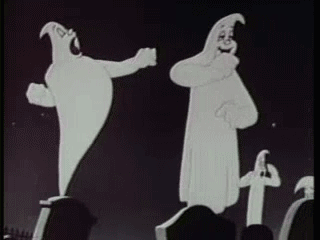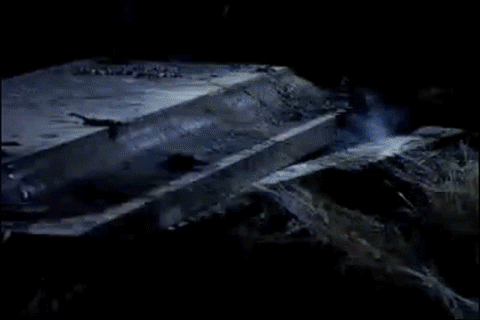View the story “Clifton Ridge: The battle for seven plots of land in Druid Hills” on Storify
Category Archives: Uncategorized
Do you know Molly?
“How many people in this crowd have seen Molly?” Madonna asked the audience at Ultra Music Festival in Miami in 2012 when she was introducing the popular DJ Aviccii.
She said she was referencing the song “Have You Seen Molly?” by Cedric Gervais. But most people in the crowd assumed she was referencing the drug Molly, which has become prevalent at music festivals around the country.
College senior Sarah, who asked to use a pseudonym for purposes of this article, was first introduced to the drug two years ago at Day Glow, the world’s largest paint party featuring electronic dance music.
“People kept coming up to me asking ‘oh do you know Molly?’” Sarah says. “And I was like, ‘who is this girl? She sounds really popular.’”
She is really popular.
Sarah took her first MDMA pill at an electronic dance music concert one year later and didn’t feel much. The next weekend she took two pills. Five days later she lost feeling in her legs, had a panic attack and was taken to the hospital.
Sarah is just one of many college students experimenting with Molly.
The Drug Enforcement Agency classifies Molly as the powder or crystal form of MDMA, the chemical drug most commonly known as the main ingredient in Ecstasy. Defined by users as a “pure” form of MDMA, its fans consider Molly safe, unlike Ecstasy, which has a reputation of being laced with anything from fertilizer to methamphetamine. But, according to the DEA, Molly is a Schedule 1 controlled substance with high possibility for abuse and addiction and no accepted medical use.
Leonard Howell, a professor of psychiatry at Emory studying the pro-social effects of MDMA says that users should not equate “pure” with “safe.”
“Just because it’s pure doesn’t mean it’s safe. Pure MDMA has bad effects on its own right,” he says. The main problem is that MDMA causes core body temperatures to rise too high, and that holds true whether the drug is pure or not, he says.
Howell explains that the pro-social effects of the drug, such as the feelings of empathy and human warmth make MDMA more popular at parties than many drugs such as mushrooms or LSD.


The Drug Abuse Warning Network (DAWN) reports that the most MDMA users are between the ages of 18 and 20. DAWN also reported a 123 percent increase in MDMA-related hospital visits from 2004 to 2009.
Molly is prevalent at music festivals like Bonaroo and Electric Daisy Carnival, which are becoming more and more popular across the United States.
Although the drug first became popular among fans of electronic dance music about a decade ago, hip-hop artists have now recently adopted it as well. Molly has been referenced so many times in recent hip-hop songs that Complexmusic.com has started a “History of Rappers Referencing Molly in Songs” page. Most notably, Kanye West references it in his single “Mercy.”
Everyone seems to be talking about Molly these days, but nobody seems to be saying the same thing.
The one thing people do seem to agree on however is what it feels like when you’re “rolling.” “I didn’t care about anything but the music and the feeling of everything,” Sarah says. “I was all about the sensations. It was weird, but it was awesome.”
Another college senior, who requested anonymity, described it as “an incredible euphoric feeling that lasts for many hours.”
Molly comes in pill or powder form and can be gummed, inhaled, swallowed or parachuted—folded up into a tissue and swallowed. Users describe a bitter taste and often a tingly sensation in the mouth when the drug is ingested.
A typical dose is around .5 grams commonly taken in smaller doses over several hours according to users. When the euphoria begins to fade away users tend to take a bit more.
MDMA is a stimulant and that “awesome” euphoria is caused by a release of the neurotransmitters, norepinephrine, dopamine and serotonin, according to Howell.
Dr. Linda Grabbe, an assistant clinical psychiatric professor at Emory’s Nell Hodgson School of Nursing, says that the release of serotonin causes a release of the hormone oxytocin, commonly known as “the love hormone.” This is what causes the feelings of empathy and human warmth that make it so popular at parties, she says.
“What people say is it gives them a great sort of social connection with other people and released inhibitions,” she says.
The release of neurotransmitters, messengers of the brain cells, is followed by a subsequent depletion, often leaving users with feelings of depression that can be short or long term, Grabbe says.
Most formal institutions like The National Institute on Drug Abuse and the DEA do not distinguish between Molly and Ecstasy, making it impossible to know the exact number of users.
Law enforcement agencies have a similar issue distinguishing between the drugs, and because MDMA has no identifiable smell like alcohol or marijuana it is hard to detect once it is ingested. Neither the Emory Police Department nor Emory University Emergency Medical Services (EEMS) record any cases involving use of MDMA. Kevin Applegate, president of EEMS says they would diagnose someone on Molly with an “altered mental state,” the same description given to someone with alcohol poisoning or a concussion.
MDMA first hit the party scene in Ecstasy pills in the early 1990s, but rumors about its composition led users to Ecstasy’s more “pure” cousin Molly.
Sarah did not know the difference between Molly and Ecstasy when she first took the drug, but she and her friends looked up the symbol printed on their pills and found a website for a company claiming to have made the drug. She says she did not necessarily trust the website, but it made her feel better about trying Molly.
Both students purchased MDMA from a “friend of a friend.” Sarah bought pills for $10 each, but according to other users, Molly usually sells for around $7 to $10 per .1 grams—or around $30 a dose.
Howell says that if users are buying the drug illegally there is no way for them to know exactly what chemicals they are getting. He says that users who think the drug is pure MDMA are “just crazy.”
He says that most MDMA-related emergency room visits occur because of seizures, hyperthermia and dehydration. Because the drug is most often taken at parties or concerts, users often do not realize how tired and dehydrated they become after dancing and sweating continuously for hours he says.
Grabbe says many patients are hospitalized after combining MDMA with alcohol or other drugs. She says because MDMA affects temperature control in the body extreme cases result in hyperthermia, or overheating. Other side effects include electrolyte abnormalities, cardiac episodes and comas. She says many negative side effects occur when users combine drugs, or have a pre-existing condition that is aggravated by the MDMA.
Howell says there is a stigma against MDMA among scientists who study the drug because sustained use can lead to a neurotoxicity to serotonin, which means a long-term deficit of serotonin neurons in the brain. He says scientists have seen the effects of this deficit in sophisticated cognitive tests. The image below shows the depletion of serotonin in the brains of monkeys tested for the effects of MDMA.
He says it is difficult to convince young people about the long-term negative effects of MDMA use. “So they’re more living for the moment, and for the moment you know the drug appears to be safe,” he says.
Grabbe thinks that users are doing more research about drugs before they use them than in the past. “I think initially it was thought to be very safe, but now people are really understanding that there are health consequences so they’re beginning to get smarter about it,” she says.
She thinks peer education would be the most effective way to prevent use. “I’m an older nurse so me coming in and saying ‘you know, you really don’t want to go there,’ isn’t going to have a lot of impact necessarily,” she says.
Sarah might be just the peer to educate others. She is an example of MDMA use gone wrong.
In the hospital after losing feeling in her legs, she showed symptoms of hyponatremia, or sodium deficiency, which is common in MDMA users who drink too much water to avoid dehydration. While testing for hyponatremia, doctors discovered that she had an undiagnosed potassium deficiency, and after using MDMA she had almost no potassium left in her system. She spent the night in the hospital with an IV regaining control over the muscles in her legs.
Even though she knows her case is unique, she says it was enough to convince her never to do the drug again. “Its popularity has decreased with me,” she says.
She says she thinks what is most dangerous about Molly is its accessibility. “I definitely would think that it’s more dangerous because like when you’re at a party so many people have it and people tend to take more,” she says.
Sarah says Molly is not confined to electronic concerts anymore. Several friends of hers have taken the drug on a normal Saturday night out, she says.
Underground Atlanta
Before Atlanta grew to be the biggest city in what is known as the Empire State of the South, it was the home of the Zero Milepost. The Zero Milepost marked the endpoint of a 138-mile railroad that started in Chattanooga. Around that endpoint, a bustling railroad city called Terminus began to form.
General William Sherman ran his Union soldiers through Terminus, burning most of it to the ground. However, the people remained resilient and again built around the milepost. Viaducts, or types of bridges, were built in the 1920’s. All the shops moved up, abandoning underground roads and aged storefronts below.
The forgotten places beneath became what is Underground Atlanta today. Plazas were constructed above starting in 1943, but in 1969 The Underground once again became the home to shops. The stores no longer resembled Jacob’s Pharmacy, the first store to sell Coca-Cola in 1866. Where people first took sips of Coke, they now buy vibrant Jordan shoes from Foot Locker.
Falling in behind the modern retail stores, chain restaurants and nightclubs moved in. Next came the Pac-Man Play Arcade. A sharp contrast to the history that surrounds it, the arcade breaks up the musty darkness with its lively music and brilliant lights.
On one side of the Underground sits a classical diner, Johnny Rockets. On the opposite half, dozens of kiosks reside, selling smartphones and rap mix tapes next to concrete blocks where old hotels stood nearly 200 years ago. Take a stroll from the historical side to the opposing MARTA station entrance, and you can see how Terminus became Atlanta and how it got from there to here.
The Underground has experienced a number of closings and reopenings for a variety of reasons. The war, MARTA, crime, and other reasons that lead to lack of retail eventually caused Atlanta to look for another solution. In mid-March, the city bought out the rest of the lease that The Underground had and now it looks to sell the subterennean mall to anyone with a plan for the area. The timeline below will help put the ups and downs of the plaza into a more visual perspective.
[timeline src=”https://docs.google.com/spreadsheet/pub?key=0AszXIVg64TwJdHhqbEkxVUFLbm1EcjlRdkhEbU5iWGc&output=html” width=”100%” height=”650″ font=”Bevan-PotanoSans” maptype=”toner” lang=”en” ]
The 1970’s was probably the only decade that the Underground Atlanta really enjoyed any success over a period of time. The gallery below features some of the advertisements that a pedestrian would find while walking through the Underground for the restaurants and bars that were open.
Cemeteries are for lovers, too
It’s a Saturday afternoon and you’re wracking your brain to come up with a cool, fun, and, let’s be honest, cheap date for your special someone. Then, suddenly, an epiphany: Oakland Cemetery! The most romantic spot in Atlanta, right?
Or, maybe you’re thinking, “Never would I ever bring a date to a place filled with creepy dead people and their creepy ghosts.”

But, Oakland Cemetery is a pretty awesome place. Founded in 1850, Oakland is the final resting place for a lot of famous, and not-so-famous, Atlantans, including Gone With the Wind author Margaret Mitchell, golfer Bobby Jones, and Atlanta’s first African American mayor, Maynard Jackson.
Oakland is a public cemetery, meaning that, for a while, every Atlanta citizen was buried there. Those who either did not or could not purchase a family plot were buried in a 7.5-acre area known as Potter’s Field. Admittedly creepy factor: A Georgia State geological study conducted in the 1970’s revealed 17,000 bodies buried in the field, laid next to and on top of one another. Although strange to think that if the dead did walk in Atlanta then 17,000 would rise from the same spot, Oakland Cemetery is impressive.
The cemetery is located on the southeast side of the city, just a few blocks from the King Memorial MARTA station. It’s situated between Grant Park and Cabbagetown.
Walking through the cemetery is like walking through the city’s history. And, after a century and a half, Oakland Cemetery has seen Atlanta through some pretty major changes, most notably its massive population growth. When the cemetery was founded, Atlanta’s population neared 2,500. Today, more than 420,000 people call Atlanta home.
[timeline src=”https://docs.google.com/spreadsheet/ccc?key=0AqTVBzk-fciCdFRhQmJyQnJ0NEc1ZWZmdEk4WkxzMkE&usp=drive_web” width=”100%” height=”650″ font=”Bevan-PotanoSans” maptype=”toner” lang=”en” ]
Not only does Oakland Cemetery have a historical cool factor, it’s a beautiful park in its own right. The cemetery’s caretakers have gone to painstaking efforts to ensure that Oakland and its gardens age gracefully.
Back in the day, families tended to their own plots and planted their own flowers. Today, all of Oakland’s 38 acres of gardens are tended by three good-hearted ladies and a band of weekend volunteers with some serious green thumbs.Throughout the year, they plant and prune among the headstones and green spaces, resulting in a truly beautiful patchwork of gardens that just happen to grow near some dead people.
Huge, ornate mausoleums framed by rose bushes and perfectly pruned shrubs sit among small, humble (and sometimes hilariously inscribed) headstones and fragrant flowerbeds. The gardens at Oakland make for a fascinating, pretty, and peaceful stroll through the cemetery on a sunny afternoon.
And totally not scary. Or morbid.
Seriously, consider Oakland as a fun, free date option. Just maybe stick to the rules and get out of there by dusk, or, you know, your date may surprise you with a zombie flash mob. But if you’re into that sort of thing, that’s cool, too.
For more information on Oakland Cemetery, including directions and park hours, click here.
WonderRoot: saving the world, one artist at a time
Imagine a place where creativity goes to flourish. Where artistic and creative types convene to develop their work. Where artists are empowered to engage their community through the arts.
A place where art is thought of as a tool for social change.

This place is WonderRoot (http://www.wonderroot.org), a nonprofit organization with the mission is to “unite artists and community to inspire positive social change.” The organization, which was founded in 2004, has many facets. There is the Arts Center, which is located at 982 Memorial Dr. SE and houses a community garden, community library, performance venue, darkroom, ceramics, screenprinting and recording studios, digital media lab and a gallery. WonderRoot provides access to computers (loaded with software) and wireless Internet. Members of WonderRoot pay either $10 a month, or $60 for the year and get access to all that the organization has to offer.
Past events at the organization have included:
- Power2Give: Loose Change Magazine – Building Community Through the Written Word – WonderRoot’s literary magazine, Loose Change, is eligible for a grant through the City of Atlanta Office of Cultural Affairs. According to the WonderRoot website, the $10,000 grant will support Loose Change to “publish a second print issue, conduct three additional writing competitions, launch the inaugural writer in residence program and host a series of community literary events throughout 2013.” http://www.power2give.org/atlanta/Project/Detail?projectId=2271
- Between Passages – A showcase of color photographs by Nicole Akstein, from her time living in rural northeast India, where she taught art and photography classes to elementary students in the Dhampur Sugar Mills in Dhampus, Uttar Pradesh. Mon., Tues., Thurs., Fri., Sat., 12 p.m. – 10 p.m. through Fri. March 15.
- Music Show — $5 show on March 13 at 9 p.m. featuring Lux Noise, D. Charles Speer and the Helix, Jason Howell and Jesse Nighswonger. Join the Facebook Event here: https://www.facebook.com/events/714944665203199/.
Tower
http://youtu.be/wrYj_omq2uc
What exactly is this man building? Find out more here
CSX
What are all those containers doing along the MARTA line? Find out more here
Underground
What’s happening to the downtown entertainment district? Find out more here



